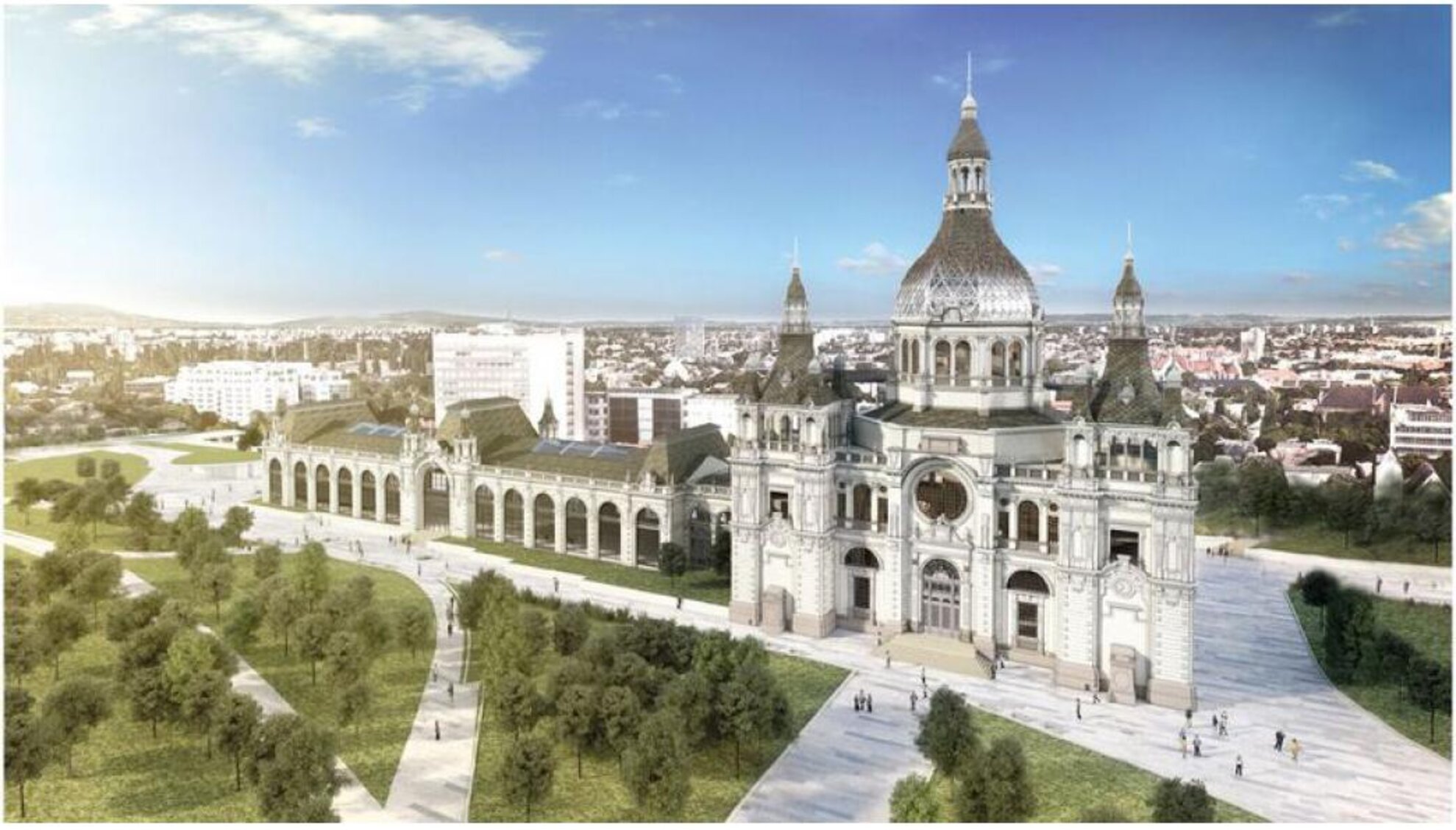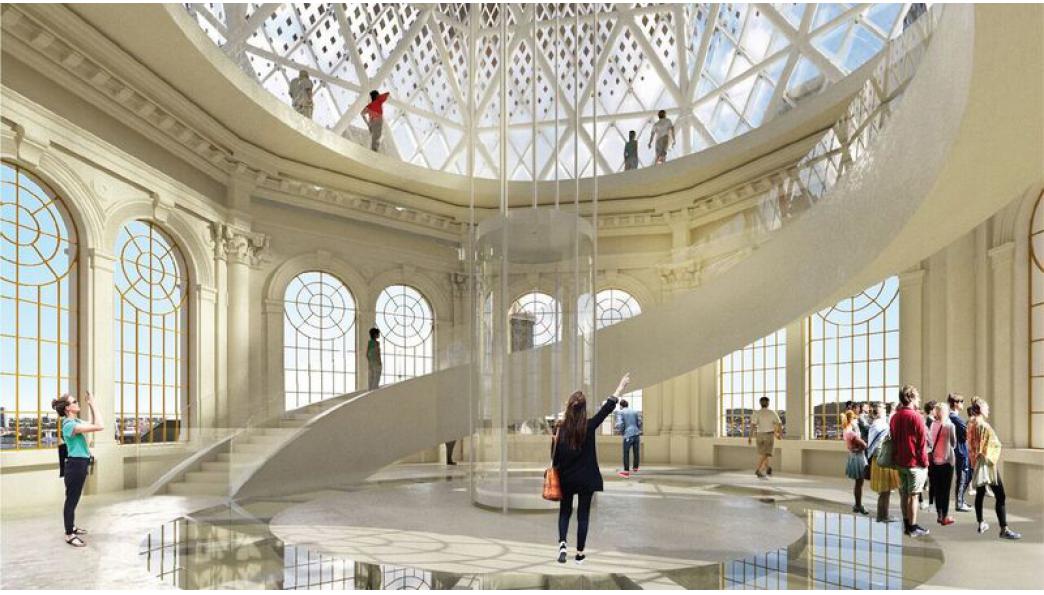Earlier, we reported on the – then planned, now ongoing – restoration of the Museum of Science, Technology and Transport. The Romantic-Eclectic exhibition hall was built at the end of the 19th century by the plans of Ferenc Pfaff who, as the chief architect of Hungary’s railway system, also designed a series of major train stations across the territory of the Austro-Hungarian Monarchy.

The original construction plans of the building, which was severely damaged in 1944, are available to this very day, so the renovation has no practical obstacle in its way. The reconstruction plans were made by the renowned experts of Mérték Architectural Studio.

The diameter of the dome is 26 meters, while its height is 67 meters; the exhibition hall will give place to relics of the railway, public roads, sailing, water architecture, post office, telephone, and telegraph. The rebuilt dome will also house a lookout turret, the plans of which were published recently.

During the reconstruction, they will not only restore the previously destroyed buildings, but also expand the complex with two new underground levels, which add up to 4,000 square meters to the facility. As a result, the area of the exhibition space will increase significantly, as well, to house an exhibition rearranged in a contemporary style that will showcase the relationship between the changes of Hungarian society and transportation, starting from the 19th century.

The exhibition won’t only display technical history, but also social history, demonstrating how transportation affected society and what demands gave birth to technological innovations. The new museum will ensure an experience that highlights stories in addition to items, unveiling past times’ history of transport technology in an almost cinematic manner.

In related news, the decades-old brand identity of the institution will be renewed in parallel with the building’s reconstruction, as well.

“The new logo reflects the objective of the museum: it considers transportation to be a coherent system. The logo symbolizes rail tracks and roads, tramway tracks and railway lines, public roads and rivers, all at the same time, thus referring to the various modes and sectors of transport,” according to a statement by museum management.




